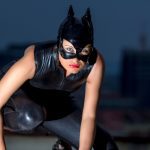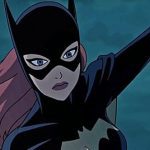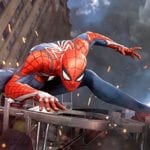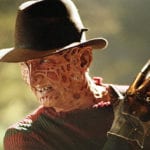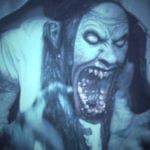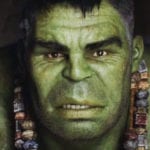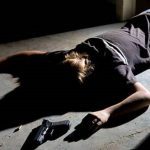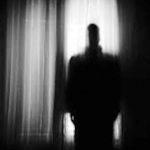 Technology
Technology  Technology
Technology  Humans
Humans 10 Everyday Human Behaviors That Are Actually Survival Instincts
 Animals
Animals 10 Animals That Humiliated and Harmed Historical Leaders
 History
History 10 Most Influential Protests in Modern History
 Creepy
Creepy 10 More Representations of Death from Myth, Legend, and Folktale
 Technology
Technology 10 Scientific Breakthroughs of 2025 That’ll Change Everything
 Our World
Our World 10 Ways Icelandic Culture Makes Other Countries Look Boring
 Misconceptions
Misconceptions 10 Common Misconceptions About the Victorian Era
 Mysteries
Mysteries 10 Strange Unexplained Mysteries of 2025
 Miscellaneous
Miscellaneous 10 of History’s Most Bell-Ringing Finishing Moves
 Technology
Technology Top 10 Everyday Tech Buzzwords That Hide a Darker Past
 Humans
Humans 10 Everyday Human Behaviors That Are Actually Survival Instincts
 Animals
Animals 10 Animals That Humiliated and Harmed Historical Leaders
Who's Behind Listverse?

Jamie Frater
Head Editor
Jamie founded Listverse due to an insatiable desire to share fascinating, obscure, and bizarre facts. He has been a guest speaker on numerous national radio and television stations and is a five time published author.
More About Us History
History 10 Most Influential Protests in Modern History
 Creepy
Creepy 10 More Representations of Death from Myth, Legend, and Folktale
 Technology
Technology 10 Scientific Breakthroughs of 2025 That’ll Change Everything
 Our World
Our World 10 Ways Icelandic Culture Makes Other Countries Look Boring
 Misconceptions
Misconceptions 10 Common Misconceptions About the Victorian Era
 Mysteries
Mysteries 10 Strange Unexplained Mysteries of 2025
 Miscellaneous
Miscellaneous 10 of History’s Most Bell-Ringing Finishing Moves
Ten Comic Book Superheroes Based on Real People
Superheroes are more popular than ever today on the silver screen. Between a myriad of different cinematic franchises and television series, it can be hard to avoid superheroes lately. They have been a part of pop culture at least since Superman first appeared in Action Comics #1 in 1938 and seem to be in no danger of disappearing anytime soon.
Most superheroes were created in comic books in the 20th century by a multitude of creative artists and writers. Inspiration for these larger-than-life characters came from many different sources, such as early science fiction novels, mythology, and cinema. Some creators even drew inspiration from real people, basing their characters on more mundane mortals. Here is a look at ten of these comic book superheroes that were based on real people.
Related: Top 10 Unexpected Things Inspired By Comic Books
9 Wonder Woman
Wonder Woman was created by renowned psychologist and feminist William Moulton Marston. He wanted to create a role model for strong and empowered women. To do so, he created a powerful Amazon warrior from an island where no men are allowed to serve as a positive and patriotic symbol to which young girls can aspire. In 1941, Wonder Woman first appeared in All Star Comics #8 and became one of the first iconic American superheroes.
Marston’s feminist ideas created some controversy in the 1940s and drew critics who did not approve of Wonder Woman’s portrayal of women. His private life was also unconventional for the time. Marston lived in a polyamorous relationship with his wife, Elizabeth Holloway, and their life partner, Olive Byrne. Byrne, a former university student of Marston’s, was the niece of famed feminist Margaret Sanger.
Both of these women seem to be the inspiration for Wonder Woman, and Marston modeled her after traits possessed by each of them. Instead of a wedding ring, Byrne wore bracelets as a sign of her commitment, much like Wonder Woman wields in the comics. In Elizabeth Holloway Marston’s 1993 obituary, the New York Times credited her with being the inspiration for Wonder Woman, although both women seem to have contributed to her.[1]
9 Iron Man
Iron Man, also known as Tony Stark, is Marvel’s rich tycoon hero. The “genius, billionaire, playboy, philanthropist” was a brilliant weapons designer whose contracts with the U.S. Government had made him extremely wealthy and whose technological genius gave him the edge over the bad guys. Creators Stan Lee and Jack Kirby based Tony Stark’s lifestyle and appearance on a real-life inventor who predated the military-industrial complex that Iron Man relied on.
Howard Hughes was a real-life eccentric genius who, among other things, served as the inspiration for Iron Man. Hughes aided the United States military in World War II and the cold war both financially and with his innovative aircraft designs. His Hughes H-1 Racer set a transcontinental airspeed record in 1937. Some of his unusual inventions were less successful, such as the all-wood Spruce Goose, which remains the largest airplane ever built. These larger-than-life follies only added to Howard Hughes’s eccentric reputation, the kind of reputation held by Tony Stark in the comics.[2]
8 Captain Marvel
Carol Danvers is a comic book heroine with quite a resume. A military pilot and magazine editor, Carol also accidentally absorbed the powers of the alien Mar-Vell to become the superhero, Captain Marvel. Having also gone under the pseudonyms of Ms. Marvel and Binary at different points in her career, Captain Marvel has been one of the most powerful Marvel heroes since the seventies.
Carol Danvers’s career as a groundbreaking female pilot draws obvious parallels to the legendary Amelia Earhart. Earhart was a famous aviator who set records in accomplishments for women, such as flying solo across the Atlantic Ocean. While attempting to be the first woman to fly around the world at the equator, Earhart mysteriously disappeared in 1937.
However, it is another iconic woman who inspired Carol Danvers originally. Captain Marvel originally debuted in 1977 as Ms. Marvel. In the story, she had left her military and NASA career behind to take on editing the new Woman Magazine. While in her secret identity as mild-mannered editor Carol Danvers, she dressed and had her hair styled in a manner similar to Gloria Steinem, editor of Ms. Magazine and outspoken feminist. As Captain Marvel writer Kelly Sue DeConnick said, “It was Gloria Steinem fan fiction in the most literal sense.”[3]
7 John Constantine
John Constantine is a mystical antihero starring in the DC series Hellblazer, who first appeared in Swamp Thing #37. The charismatic magician in a trenchcoat was created by writer Alan Moore as a subversion of the typical old sorcerer in an ivory tower and instead represents a streetwise blue-collar warlock. The character’s popularity has spawned a movie, TV series, and several guest appearances in other DC-related works as well.
When John Constantine first appeared, Swamp Thing artists Steve Bissette and John Totleben confided in Alan Moore their desire to draw a character who looked like Sting, as both were fans of the musician. Moore wanted to fulfill their wish and came up with a character that would look just like the lead singer of The Police. Trying to find a way to fit it into the Swamp Thing comic, he created a British occult expert with an uncanny resemblance to Sting by the name of John Constantine.[4]
6 The Thing
Ben Grimm, the ever-loving blue-eyed Thing, has been a member of the Fantastic Four since their debut in 1961. Created by Stan Lee and Jack Kirby, he grew up poor in New York’s fictional Yancy Street and went on to become a pilot in WWII. He ended up helping his college friend Reed Richards and the other Fantastic Four members by reluctantly piloting Richards’s spacecraft.
Cosmic radiation the team encountered transformed them into super-powered beings and changed Grimm into an incredibly strong creature made of stone. His teammate Susan Storm commented that he had turned into “some kind of thing,” and he took the Thing as his new name.
Creator Jack Kirby had quite a lot in common with the Thing. Both grew up poor in New York and learned to fight at an early age, Kirby being from Delancey Street instead of Yancy Street. Kirby also served in WWII. The Thing’s personality was similar to Kirby’s, who was prone to moodiness and fits of anger like the rocky hero. The Thing was subtly written as a Jewish superhero, and his faith has become more open throughout the years. This also parallels Jack Kirby and his Jewish upbringing.[5]
5 Popeye
Popeye the sailor first appeared in a comic strip called “Thimble Theater,” created by Elzie Crisler Segar in 1919. The spinach-loving Popeye became the most popular character in the strip and launched him into a series of popular short cartoons from Fleisher Studios. Eventually, a feature film starring Robin Williams as the pipe-toting sailor was released in 1980. What’s more, many from E.C. Seger’s hometown claim that Popeye was based heavily on an actual resident of the community.
Frank “Rocky” Fiegel was a bartender and laborer from Chester, Illinois. While not a sailor known for his love of spinach, the rest of Popeye’s characteristics allegedly fit him to a tee. He had the same jutting chin and trademark pipe. Rocky was known for being very good with his fists and unafraid to get into a brawl. Despite this, he was also known to have a soft spot for the local kids, entertaining them with feats of strength and protecting them from bullies.
Other characters in the “Thimble Theater” and “Popeye” cartoons also seem to be based on Chester locals. Olive Oyl is said to be based on store owner Dora Paskel, and the hamburger-loving Wimpy is likely modeled on William Shuchert, manager of the Chester Opera House where Segar once worked.[6]
4 Stargirl
Stargirl, also known as Courtney Whitmore, made her debut in Stars and S.T.R.I.P.E. #0 in 1999. Created by Geoff Johns, Courtney was a teenage girl who discovered her stepfather’s superheroic past, took his old sidekick’s costume and cosmic converter, and fought crime alongside her stepfather (in his S.T.R.I.P.E. armor) as the Star-Spangled Kid. She went on to join the Justice Society, and a fellow member, Starman, granted her his cosmic rod when he retired, giving her a host of new powers. She renamed herself Stargirl in his honor. Stargirl has remained a popular comic hero and starred in a CW series.
Stargirl had a real-life inspiration who was very close to the creator. Geoff Johns based Courtney Whitmore on his late sister, who shares the first name, Courtney. Courtney Johns was a passenger in 1996 on TWA Flight 800. This flight ended in a tragic explosion and crash that killed 230 people, including Courtney.
Inspired by the memory of his sister’s positive and fearless attitude, he made Stargirl in the image of Courtney. Johns once confided to the New York Times, “My sister was a ball of energy and so optimistic and unafraid. I wanted to try to capture some of that in a character that would be around forever.”[7]
3 Professor X
Charles Xavier, the founder and leader of the X-Men, was created by Stan Lee and Jack Kirby in X-Men #1 in 1963. Professor X, as Xavier is known to his students, brought the X-Men together in part to stand up for the rights of mutants. Mutants have long stood as a metaphor in Marvel for the “other” in society that faces discrimination, whether it is based on race, religion, gender, or nationality. What separates mutants from the rest of humanity includes a superpower, such as Professor X’s ability to read minds.
Professor X has as his goal the peaceful coexistence of humans and mutants. This contrasts with his nemesis, Magneto, who believes mutants should demand equality or superiority by any means necessary. These philosophical differences seem similar on the surface to the differences between famous civil rights leaders Dr. Martin Luther King, Jr., and Malcolm X. It has been rumored, in fact, that these two mutants were based on and inspired by the lives of these men, despite the fact the timing is off.
When writer Chris Claremont took over the X-Men series in 1975, however, he did take inspiration from different influential leaders for his depictions of Professor X and his rival. Professor X, according to Claremont, is analogous to Israel’s first prime minister, David Ben-Gurion. Ben-Gurion held office from 1948 to 1954, when he worked to encourage other Jews to move to Israel and helped found the nation, working to improve peaceful relations with the rest of the world.
Magneto, by contrast, was inspired by Menachem Begin. Begin was the leader of the Zionist military group Irgun, which the British military classified as a terrorist organization. Begin was elected prime minister in 1977, during which he brokered a peace treaty between Israel and Egypt, winning a Nobel Peace Prize. This mirrors Magneto’s character arc, leaving his villainous past behind him to become an ally of the X-Men and their cause.[8]
2 Dr. Strange
Dr. Stephen Strange is the Sorcerer Supreme of the Marvel Universe. A former surgeon, Dr. Strange studied ancient mystic arts to protect Earth from threats from any dimension. Created in 1963 by Steve Ditko and Stan Lee, Dr. Strange was intended as a spooky, paranormal hero with elements of horror and suspense. Stan Lee has stated that much of Dr. Strange was inspired by the radio show “Chandu the Magician.” His appearance, however, was heavily influenced by a real-life horror legend.
Illustrator Steve Ditko modeled Dr. Strange’s look on the actor Vincent Price. Price was known for his roles in many horror and thriller movies and for having a spooky presence in his films. In the 1963 Roger Corman movie The Raven, Vincent Price played a sorcerer named Dr. Erasmus Craven, who seems particularly similar to Dr. Strange. Another clue left by the creators is the character’s middle name. Dr. Stephen Vincent Strange is a nod to the iconic actor.[9]
1 Green Lantern
There have been many DC heroes who have taken on the role of Green Lantern since Alan Scott, the first in 1940. The most well-known Green Lantern, however, is most likely Hal Jordan, who debuted in D.C. Showcase #22 in 1959. Jordan was originally a fearless test pilot when a dying alien left him a power ring. He was trained in its use by the intergalactic Green Lantern Corps. His instructor and former friend, Sinestro, ended up becoming one of his greatest villains.
Ryan Reynolds and Mark Strong played the characters in a forgettable Hollywood movie. Still, artist and creator Gil Kane was inspired by the likeness of different real-world actors for Green Lantern and Sinestro. Hal Jordan was known as a bit of a ladies’ man, and Kane based his appearance on handsome movie star Paul Newman. Green Lantern’s nemesis Sinestro had his look borrowed heavily from award-winning British actor David Niven.[10]
